The environmental impact of our holiday menu
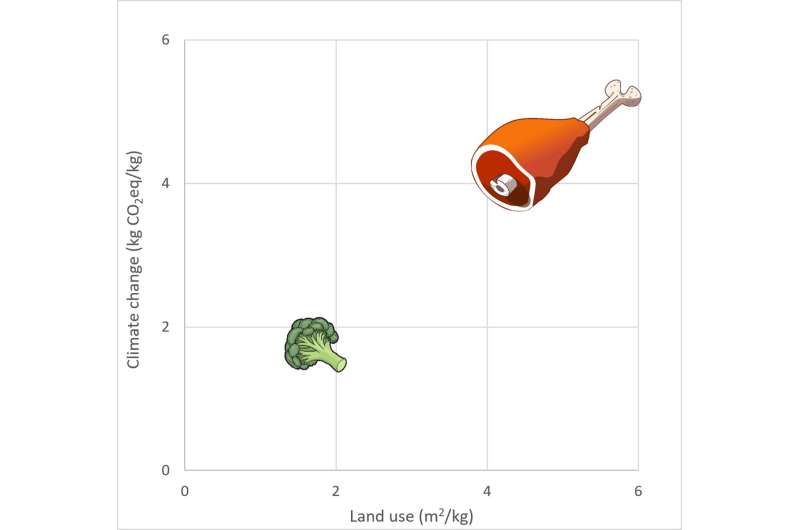
With the holiday season fast approaching, do you know the carbon footprint of a traditional meal such as roast turkey and meat pies?
Thomas Elliot, a postdoctoral researcher at École de technologie supérieure (ÉTS), and his colleagues at ÉTS and McGill University estimated the carbon footprint of a typical meal with Life Cycle Assessment (LCA), a tool that is used not only to assess the total environmental footprint of the food we eat, but also to communicate the findings.
Up to 70% of a person's daily carbon budget
During the holiday season, we consume richer foods that have a greater impact on the environment. By comparing the environmental impact of typical holiday foods with other foods with a smaller ecological footprint, the research team concluded that a meal consisting of a roast ham, pork pie and a slice of fruit cake, for example, consumes up to 70% of a person's daily carbon budget, according to the targets set by the Paris Agreement.
As a result, the large carbon footprint of this meal leaves little room for other activities such as heating, transportation and Christmas gifts. On the other hand, a person who ate a serving of vegetable pie, Vegan Wellington and vegan cake would only use around 14% of their daily carbon budget, along with a fairly small parcel of land.
This is sobering in a context where we are encouraged to limit our personal carbon footprint to 2.9 tons of CO2 equivalent per year to reach the 1.5 °C target set by the Paris Agreement, or about 8 kg per day for all goods and services, including food.
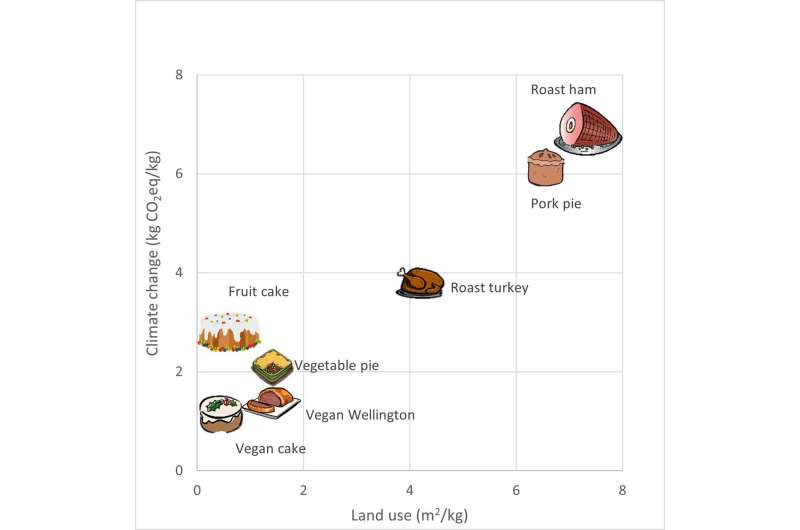
The data used in this analysis
The team first evaluated an average Canadian diet, which emits 15 kg of CO2 equivalent and requires 16 m2 of agricultural land per day. People following a vegan or plant-based diet emit 5 kg of CO2 equivalent for about 5 m2 of land per day. These rates are equal to 4 kg of CO2 eq. and 5 m2 per kg of food for omnivores, and 2 kg of CO2 eq. and 2 m2 per kg of food for vegans.
The team then examined the types of festive foods people eat during the holidays, such as roast ham, turkey, pork pie, and fruit cake. In their analysis, they included a vegan roast Wellington, a vegetable pie, and a vegan Christmas cake.
Ham roast and pork pie have a much higher impact than all the food consumed in one day on average by a person in Canada on a typical omnivorous diet, confirming that the food consumed during the holidays increases our ecological footprint.
-
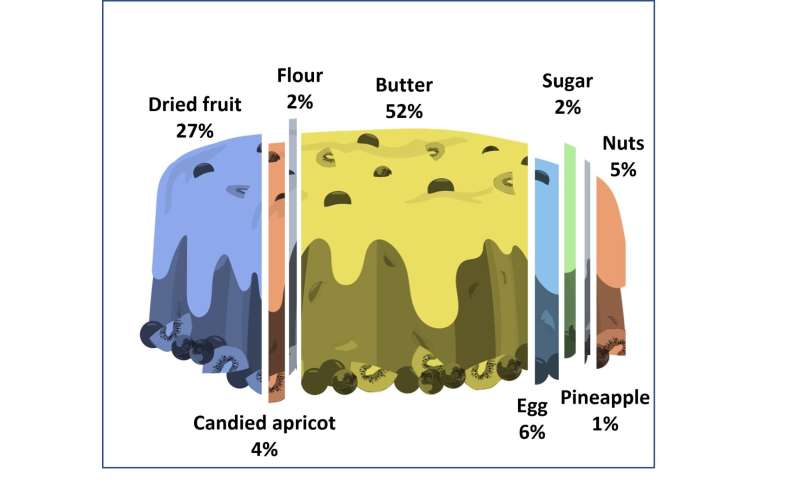
The vegan Christmas cake, for example, produced less carbon and used less land than the vegetarian fruit cake that contained eggs and butter, although in this case the relative differences were less striking. Credit: ETS -
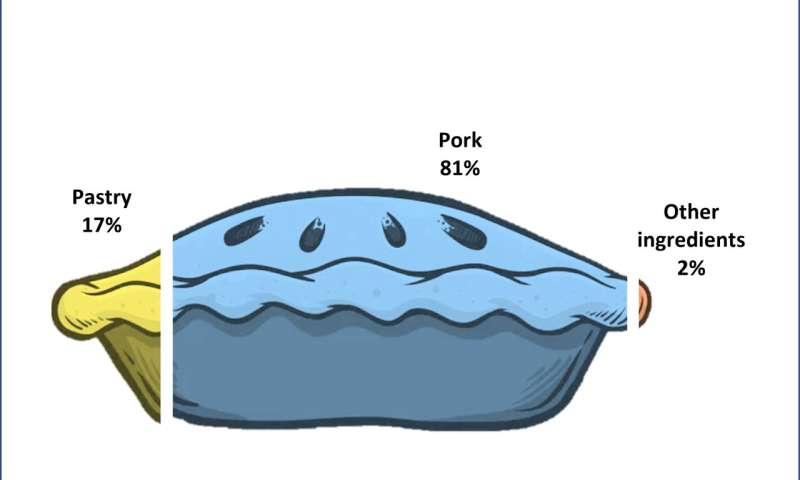
The pork meat made up 54% of the pork pie by weight, but contributed 81% of its greenhouse gas emissions. Credit: ETS -
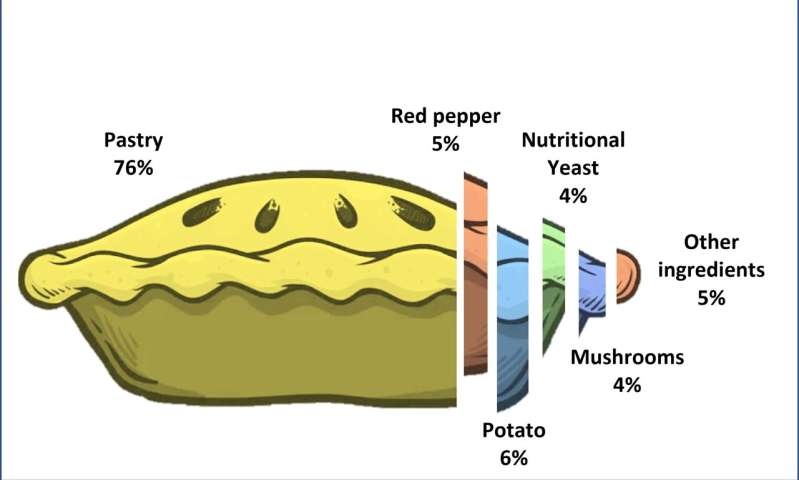
The vegan vegetable-based pie, which had a third of the environmental impacts compared to the pork pie, generated more than three quarters of its impacts from the pastry crust, its contents of potatoes, mushrooms, and tofu being so environmentally benign by comparison. Credit: ETS
Carbon footprint and land use rise proportionately; more land used generally means more greenhouse gas emissions (GHG). For instance, the roast ham emitted three times more carbon than the vegan Wellington and used more than 4.5 times of the land area. In fact, the roast ham had the highest carbon and land use footprint of the meals modeled by the team, showing the carbon and land intensity of pork meat. Pork pie followed by roast turkey came next, trailed by the foods that do not contain meat. The vegan Christmas cake, for example, produced less carbon and used less land than the vegetarian fruit cake that contained eggs and butter.
Digging deeper, the team found that as pork meat made up 54% of the pork pie by weight, it contributed 81% of its greenhouse gas emissions. In comparison, for the vegan vegetable-based pie—at one third the environmental impact of the pork pie—it is the crust that generates more than three quarters of the impact, while the potato, mushroom, and tofu filling is negligible for the environment.
About Life Cycle Assessment (LCA)
LCA makes it possible to estimate the potential impact of lifestyle choices on global warming, biodiversity loss and water pollution. Its purpose is to create an inventory of environmental impacts linked to the flow of resources in a supply chain.
For example, it can capture the extraction of mineral fertilizers and pesticides, energy and water used in a farming operation; materials used in packaging; fossil fuels used to transport farmed products to consumers, including the energy to refrigerate and cook the food and, finally, the energy to transport waste to landfill or recycling centers.
Provided by École de technologie supérieure




















